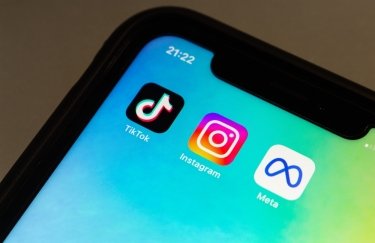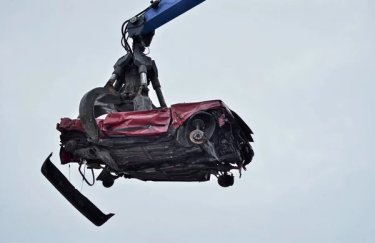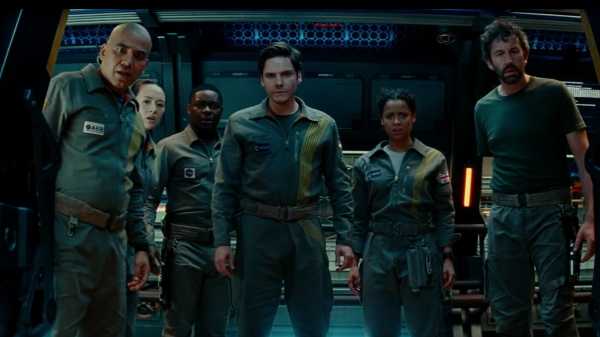
“Coming soon” is a common phrase to see at the end of a movie trailer. “Coming very soon,” however, is not.
Yet that three-word promise at the end of a trailer that aired during the Super Bowl signaled that something unexpected was en route, and, “very soon,” at that. That something? The new Cloverfield movie, which prior to the game wasn’t due out, as far as anyone knew, for more than two months — but is now streaming on Netflix.
Here are four things to know about The Cloverfield Paradox, how it got released, and why its unconventional distribution matters.
The movie’s release was a total surprise
It’s normal for hotly anticipated movie trailers to premiere during the Super Bowl, and prognosticators had fingered the trailer for the upcoming Cloverfield movie as one of this year’s many possible offerings. But a little over two hours before the big game kicked off, Ava DuVernay — director of Selma and Disney’s forthcoming A Wrinkle in Time — posted a Tweet that set the rumor mill a-buzzing:
Just a trailer wouldn’t be enough to warrant that kind of hype. But the scuttlebutt quickly emerged that DuVernay’s tweet was in reference to the upcoming Cloverfield movie, the release of which had been pushed back several times and recently set for April 20, with Netflix acquiring the movie from Paramount, presumably to live primarily on its streaming service. Until Super Bowl Sunday, Netflix’s plans hadn’t been clear: Would the film launch in theaters first? Would it open nationwide, or in just a few theaters? Would it just drop exclusively on Netflix on April 20? Even the name of the movie wasn’t set in stone, having been through several iterations: First it was God Particle, then just Cloverfield Movie, then Cloverfield Station.
But when the trailer aired during the Super Bowl, everything became clear: the movie would be called The Cloverfield Paradox, and it was coming out right after the game.
This was a gutsy movie on Netflix’s part; right after the Super Bowl was when a big episode of the wildly popular NBC drama This Is Us was also set to air — an episode that NBC has been marketing the ever-living crap out of.
Dropping the movie right after the game, then, was a pretty bald attempt to see if the streaming giant could do an end run around one of the most anticipated TV episodes of the year. And while Netflix doesn’t typically release viewership statistics, if The Cloverfield Paradox does well, the company will probably brag about it — and we’ll get an idea of whether its experiment worked.
The Cloverfield Paradox is indeed part of the bigger Cloverfield universe
The Cloverfield “universe” is one of the more unpredictable and interesting franchises in mainstream cinema today — if you can even call it a franchise. What’s interesting about it is that it isn’t really a series of sequels (like a conventional movie franchise) or even a number of interconnected movies with characters who cross over from one film to another (like the Marvel or DC Comics films).
There’s no real central point around which the world of Cloverfield pivots that’s been clearly explained. There have only been three movies so far, including Paradox — though a fourth, called Overlord, is reportedly done filming and will likely be out soon — and they each stand alone as self-contained films. You don’t need to have seen one to understand the others, and there’s virtually no crossover between them. So on one level, they work more like an anthology series (think of Black Mirror or The Twilight Zone), with each installment co-existing in the same world but not being tightly integrated with its peers.
That’s exciting because it gives the filmmakers and Cloverfield producer/mastermind J.J. Abrams the ability to incorporate interesting stories into the broader universe — which is how both The Cloverfield Paradox and 2016’s 10 Cloverfield Lane wound up with “Cloverfield” in the title — and because each new movie approaches that world from a new angle. That potentially allows directors and writers to have a lot of latitude in exploring all kinds of genres and storytelling devices.
The series debuted 10 years ago with the release of 2008’s Cloverfield, a good old-fashioned monster movie made in the style of a found-footage film purportedly shot by a group of friends fleeing a monster that’s attacking New York. Directed by Matt Reeves, who went on to make Dawn of the Planet of the Apes and War for the Planet of the Apes, the movie was produced by J.J. Abrams and was a bona fide hit with critics and audiences alike.
The franchise then lay dormant until 2016, when 10 Cloverfield Lane hit theaters. It’s not a sequel to Cloverfield, and in fact it wasn’t considered part of the Cloverfield universe until production had begun and the filmmakers decided to make it a “spiritual successor” to that first movie. The movie’s title wasn’t announced until January 15, 2016 — just shy of two months before its theatrical release — which generated buzz and speculation about how much it would link up with Cloverfield.
Related
10 Cloverfield Lane is a tension-filled thriller that’s worthy of the secrecy surrounding it
The answer, as it turned out, was “not a lot.” Starring Mary Elizabeth Winstead and John Goodman and directed by relative newcomer Dan Trachtenberg, 10 Cloverfield Lane is more of a psychological horror film about a girl who finds herself trapped in a cellar with a few other people, all guarded by a strange and possibly psychotic man. It’s not until the end of the film that we discover how the movie really relates to the Cloverfield universe, and even then, the movie feels more like a “sidequel” than a sequel. (No matter what, it’s an enormously fun watch.)
The Cloverfield Paradox traveled a similar route to its final state. It reportedly went into production at Paramount in 2012, back when it was known as God Particle; eventually it was brought into the Cloverfield fold as a prequel to Cloverfield. It’s a little more aligned with the still-fuzzy Cloverfield mythology, but it’s not quite like the other two films. Rather than being a found-footage monster movie or a quieter drama about escaping a potential psychopath’s clutches, it’s firmly planted in the realm of science fiction (with some strong nods to body horror), and it tries to give some sense of how the events of Cloverfield may have been triggered.
Which sounds like it should be great.
Unfortunately, it’s not very good
Alas. The Cloverfield Paradox has a great cast and an interesting setup, but it feels extremely — almost painfully — derivative of other science fiction films. It’s not nearly as good as its predecessors.
vox-mark
vox-mark
vox-mark
vox-mark
vox-mark
The basic setup is this: The world’s resources are becoming exhausted, and Earth’s population is being plunged into an energy crisis that threatens whole populations with starvation and puts the survival of humanity at risk. Hamilton (Gugu Mbatha-Raw) is a scientist who reluctantly decides to leave her husband (Roger Davies) on Earth and join the crew of an international space station on a mission to test a particle accelerator that might solve the energy crisis.
On board the space station, which is commanded by Kiel (David Oyelowo), she meets her fellow scientists and engineers from around the world who are all devoted to the same project: Schmidt (Daniel Brühl), Mundy (Chris O’Dowd), Tam (Ziyi Zhang), Acosta (John Ortiz), and Volkov (Aksel Hennie). Their experiments don’t go well, and the duration of their mission keeps getting extended even as the situation on Earth gets worse. A talking-head commentator on cable TV warns that even if the crew does succeed, they may rip open the fabric of the space-time continuum, “smashing together multiple dimensions, shattering reality, and not just on that station.” He warns that they could “unleash chaos, the likes of which we’ve never seen — monsters, demons, beasts from the sea.” This all is obvious to anyone who has accepted what he calls the “Cloverfield Paradox.”
It sounds pretty far-fetched, and the scientists keep working — and one day, they seem to find a solution to Earth’s energy crisis. But then things on the space station start getting really weird, really fast.
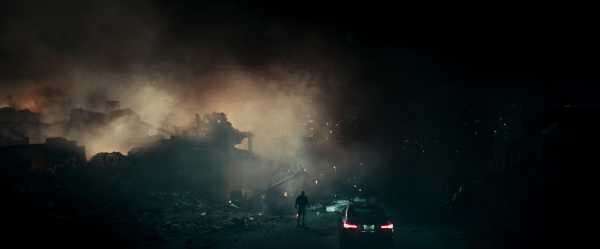

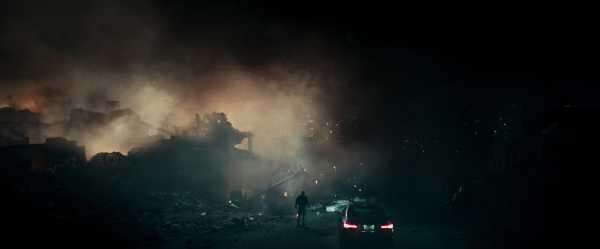
The problem with The Cloverfield Paradox isn’t really its story, or even the fact that it’s derivative, though it bears a strong resemblance to a host of other science fiction movies, including last year’s Life. What’s unfortunate is that the film was clearly reshot and re-edited within an inch of its life. The tell-tale sign is the feeling that a storyline has been severely modified after shooting it. And without giving too much away, such a sign is evident here, particularly in some early scenes and also in the storyline with Hamilton’s husband Michael, which feels poorly stapled together and strangely over-emphasized, even though it lacks thematic harmony with the rest of the film.
The movie also contains some of the leftovers of whatever the God Particle version of the film was going to be — like a prayer uttered by Acosta that is emphasized by several other characters, and apparently answered. (“Hit us with your holy stick!” one of the crew says to Acosta before he prays.) Combined with a few sporadic religious references, you wonder if this film wasn’t originally headed in another direction entirely, and why producers ultimately decided to leave these markers in.
These are relatively minor quibbles, but they add up to make a film that feels distracted and not quite sure of itself, coupled with some corny dialogue and a few hamfisted plot points. And that’s a shame.
But all that may not matter all that much for The Cloverfield Paradox in the end.
It’s probably for the best that The Cloverfield Paradox wasn’t released in theaters
Netflix apparently bought The Cloverfield Paradox film from Paramount within the last couple weeks, and that was not just a gutsy move but probably a good one for Netflix, for Paramount, and for the movie itself.
That’s because a movie like The Cloverfield Paradox frankly was not going to find an opening in the 2018 theatrical release calendar in which it could do well. The movie would likely have earned only middling reviews from most critics (which would contribute to a lackluster Rotten Tomatoes score, a measure by which many moviegoers make their ticket-buying decisions), and it would have to fight its way through the sea of other sequels and franchises to get to the top of the heap. Without much to distinguish it from other science fiction movies except its somewhat minor connection to the Cloverfield movies, it probably would not have performed well at the box office.
But on Netflix, it will likely do much better. There’s a lower barrier to entry for watching movies on Netflix than there is at the theater; witness, for instance, the runaway success of Bright, a terrible movie that nonetheless hauled in 11 million viewers in its first three days on Netflix, at least according to Netflix. What Bright proves is that if you put an interesting cast (Bright stars Will Smith, Joel Edgerton, and Noomi Rapace) with an intriguing premise onto a streaming platform that people already pay to subscribe to and let them watch it without spending more money — or, indeed, even having to leave the house — they’ll probably give it a shot.
I wouldn’t put The Cloverfield Paradox and Bright in the same league; the former is better by a long shot, even if it’s not very good. But the same principle most likely applies. Love it or hate it — and, if all the film does is confirm to Netflix that the company doesn’t need to make great movies in order to find a huge audience, I’m firmly in the latter camp — this is the world that filmmakers and moviegoers occupy now. We certainly haven’t seen the last of this kind of experimenting and tinkering on the part of Netflix and other streaming services.
And even if the big gamble doesn’t work — if a surprise drop of The Cloverfield Paradox doesn’t draw all that much attention — it was probably still a smart move for everyone involved. The Cloverfield Paradox may be a mediocre movie, but as a trial balloon in Netflix’s attempts to carve out a model that works for its business, it’s utterly fascinating.
Sourse: vox.com
